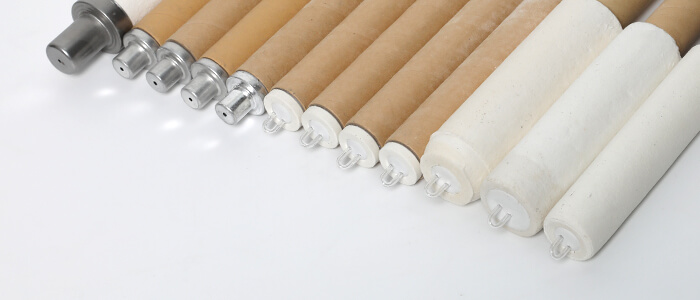Thermocouples are temperature-measuring devices that utilize the thermoelectric effect to create a voltage that is proportional to the temperature difference between two points. Thermocouples play a critical role in various industries such as power generation, automotive, aerospace, and industrial processing. Rapid immersion thermocouples are crucial for ensuring efficient and accurate temperature measurements in high-temperature environments. This paper aims to analyze the market for rapid immersion thermocouples and examine the differences in the use of clay, ceramic, and ceramic fiber materials for thermocouples.
Market Analysis for Immersion Thermocouples
The global market for thermocouples has been growing steadily over the years and is expected to continue growing due to the increasing demand for advanced temperature measurement devices. Rapid immersion thermocouples are gaining popularity due to their fast response, accuracy, and versatility. The rapid immersion thermocouples market is expected to grow at a CAGR of 6.7% from 2020 to 2027, according to a report by Fortune Business Insights.
The following factors are driving the growth of the rapid immersion thermocouples market:
1. Increasing demand for efficient temperature measurement devices in various industries
2. Strict regulations and standards for temperature control and measurement in industrial processes
3. Technological advancements in thermocouple materials and designs
4. Growing adoption of automation in industrial processes
The United States, Germany, and Japan are some of the leading countries in the thermocouple market due to their advanced industrial infrastructure and high demand for temperature measurement devices.
Materials Analysis for Immersion Thermocouples
Clay, ceramic, and ceramic fiber materials are commonly used in the manufacture of thermocouples due to their high-temperature resistance properties. Each of these materials has unique properties that make it suitable for different thermocouple applications.
1. Clay Materials
Clay materials are among the oldest materials used for thermocouple production due to their excellent resistance to high temperatures. Clay materials consist of refractory materials, which are a blend of binders, fillers, and additives. Clay materials are generally low cost, readily available, and are easy to mold into different shapes. However, clay materials have a lower thermal shock resistance compared to ceramic and ceramic fiber materials.
Clay materials are suitable for use in thermocouples used in low-temperature applications such as furnaces, kilns, and ovens. Clay materials are also used in the manufacture of thermocouple sheaths, which are used to protect the thermocouple wires from harsh environmental conditions. The sheaths have high resistance to corrosion and mechanical damage, making them ideal for use in industrial processes.
2. Ceramic Materials
Ceramic materials are widely used in the manufacture of thermocouples due to their excellent high-temperature resistance properties. Ceramic materials are made from refractory compounds such as aluminum oxide and silicon carbide. Ceramic materials are non-metallic, which makes them immune to electromagnetic interference and radiation. Ceramic materials have high thermal shock resistance, making them suitable for applications that require fast thermal cycling.
Ceramic materials are suitable for use in high-temperature applications such as the steel industry, cement production, and chemical processing. Ceramic materials are also used in the manufacture of thermocouple protection tubes, which are used to protect the thermocouple wires from high-temperature and corrosive environments.
3. Ceramic Fiber Materials
Ceramic fiber materials are a relatively new development in the thermocouple industry. Ceramic fiber materials are made from filaments of alumina, silica, or zirconia. Ceramic fibers have excellent thermal insulation properties, making them ideal for use in thermocouples that require high-temperature insulation. Ceramic fiber materials are flexible, lightweight, and resistant to thermal shock.
Ceramic fiber materials are suitable for use in high-temperature applications such as aerospace, automotive, and power generation. Ceramic fiber materials are also used in the manufacture of thermocouple assembly kits, which are used to assemble thermocouples in the field.
Conclusion
Rapid immersion thermocouples are crucial for ensuring efficient and accurate temperature measurements in high-temperature environments. The global market for rapid immersion thermocouples is growing steadily due to the increasing demand for advanced temperature measurement devices. Clay, ceramic, and ceramic fiber materials are commonly used in the manufacture of thermocouples due to their high-temperature resistance properties. Each of these materials has unique properties that make it suitable for different thermocouple applications. The choice of thermocouple material should be based on the specific application requirements.


